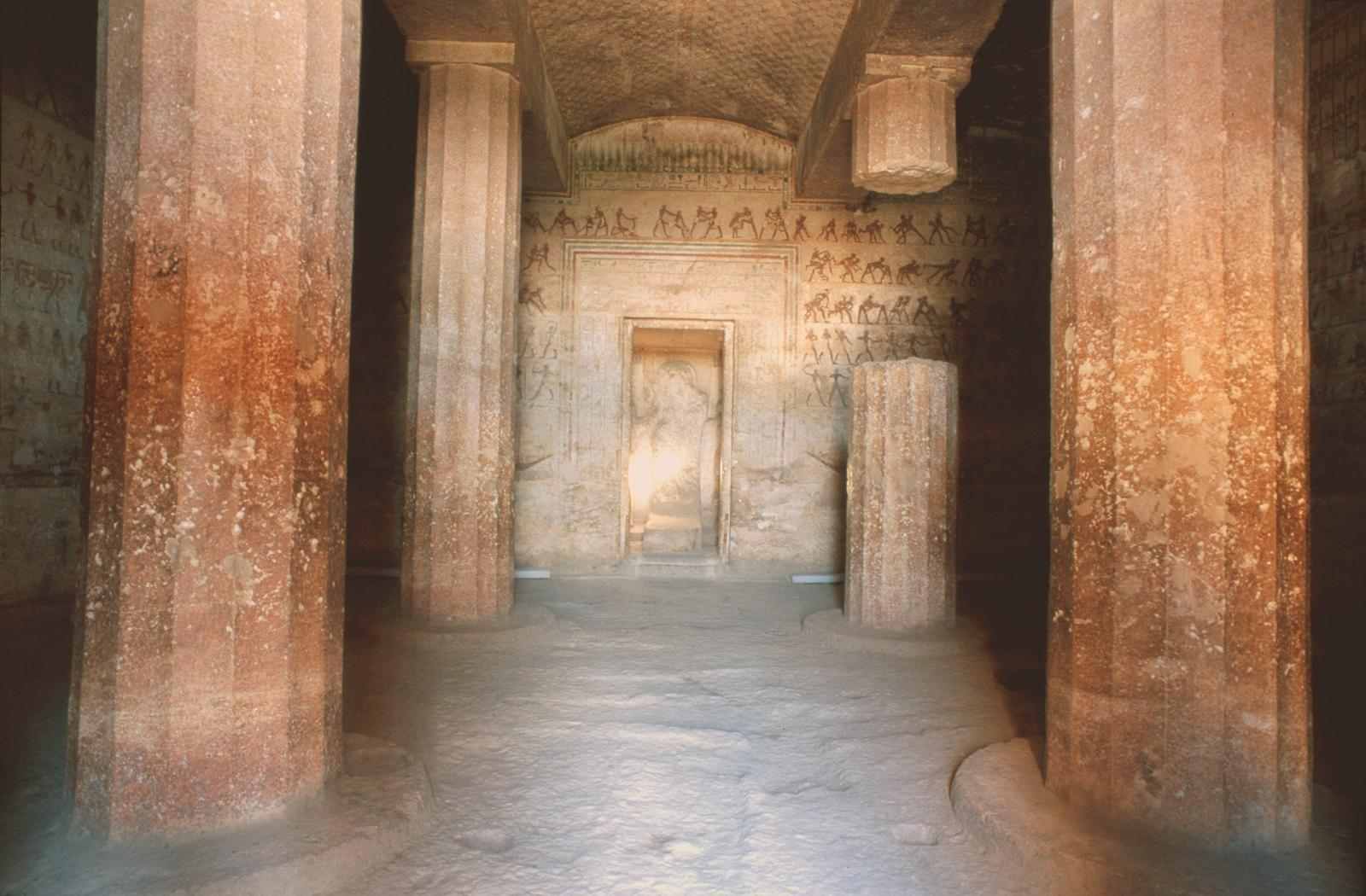Beni Hassan Tombs: Ancient Painted Tombs on the Nile
Beni Hasan, located on the eastern bank of the Nile River in Egypt, is an archaeological site that holds great significance in understanding the history, art, and burial practices of ancient Egypt. This fascinating site is known for its rock-cut tombs and beautifully preserved wall paintings, offering a window into the lives of the elite during the Middle Kingdom period. In this comprehensive guide, we will explore the various aspects of Beni Hasan, including its historical context, architectural features, artistic treasures, and the insights it provides into ancient Egyptian society.
Historical Context: Middle Kingdom Egypt
The Middle Kingdom period, spanning from approximately 2055 to 1650 BCE, marked a significant era in ancient Egyptian history. It was a time of stability and cultural renaissance following a period of political unrest. The pharaohs of the Middle Kingdom sought to solidify their rule and showcase their power through ambitious building projects and artistic endeavors. Beni Hasan, with its tombs and vibrant wall paintings, provides a wealth of information about this period.
Tombs and Architectural Features
The tombs at Beni Hasan are carved into the limestone cliffs overlooking the Nile. They were constructed for high-ranking officials and local rulers of the time. The tombs exhibit a unique architectural style, characterized by a sloping entrance corridor leading to a central pillared hall and burial chamber. Some tombs even feature multiple chambers and intricate passageways.
Wall Paintings: A Glimpse into Ancient Egyptian Life
The wall paintings found within the tombs of Beni Hasan are true masterpieces of ancient Egyptian art. These vibrant and well-preserved frescoes provide invaluable insights into various aspects of daily life during the Middle Kingdom. Scenes depict agricultural activities, hunting expeditions, religious rituals, and even military campaigns. The attention to detail and the use of vivid colors bring these ancient scenes to life, giving us a glimpse into the customs, occupations, and beliefs of the time.
The Nobles of Beni Hasan
Many of the tombs at Beni Hasan belonged to local rulers and officials who held prominent positions in the government. These individuals played significant roles in the administration of their regions and were responsible for maintaining the pharaoh's authority. The tomb decorations often showcase the achievements and titles of the deceased, emphasizing their connection to the pharaoh and their loyalty to the kingdom.
Religious and Funerary Practices
The wall paintings also shed light on the religious and funerary practices of ancient Egypt. Scenes depict offerings to the gods, rituals performed by priests, and the belief in the afterlife. The preservation of these customs in the tombs indicates the importance placed on ensuring a successful transition into the next life and the eternal preservation of the soul.
Exploring Beni Hasan: Visitor Experience
Visiting Beni Hasan allows you to immerse yourself in the world of ancient Egypt. The site is easily accessible, and guided tours are available to provide in-depth explanations of the tombs and their historical significance. As you enter the tombs, marvel at the intricate carvings and detailed paintings that have survived for thousands of years. The experience is truly awe-inspiring, as you witness the craftsmanship and artistic skill of ancient Egyptian artisans.
Preservation and Future Studies
Preserving and protecting the tombs at Beni Hasan is of utmost importance to ensure their longevity. Ongoing conservation efforts aim to safeguard the structures and artworks, preventing deterioration caused by environmental factors. Archaeologists and researchers continue to study the tombs and their contents, uncovering new information about ancient Egyptian history, society, and culture.
Egypt Tours Including Beni Hasan
| Tour | Itinerary | Price |
|---|---|---|
| Cairo City Breaks | 3 Days | $ 255 |
| Cairo Private Tours | 4 Days | $ 429 |
| Luxor and Aswan Travels | 4 Days | $ 665 |
| Cairo Holiday Packages | 5 Days | $ 819 |
| Nile Cruise Cairo to Luxor | 13 Days | $ 6337 |
| Nile Cruise Cairo to Aswan | 15 Days | $ 7950 |
Beni Hasan FAQs
Why is Beni Hasan important?
Beni Hasan is important for its rock-cut tombs dating back to the Middle Kingdom of ancient Egypt. These tombs belonged to high-ranking officials and feature well-preserved paintings depicting daily life, offering insights into ancient Egyptian society, art, and burial practices. The site is valuable for understanding the social, economic, and cultural aspects of the Middle Kingdom period.
How many tombs does Bani Hassan have?
Beni Hasan has a complex of around 39 rock-cut tombs that date back to the Middle Kingdom period of ancient Egypt. These tombs belonged to high-ranking officials and administrators, providing a rich source of information about the society, art, and culture of that time. The tombs are known for their well-preserved wall paintings depicting scenes of daily life and various activities.
Who was buried in the rock-cut tombs of Beni Hasan?
The rock-cut tombs of Beni Hasan were primarily used for the burial of high-ranking officials and administrators during the Middle Kingdom period of ancient Egypt (approximately 2055–1650 BCE). These tombs belonged to individuals who held important positions in society and served the ruling pharaohs. The individuals buried in these tombs were likely involved in various administrative, economic, or political roles, and their tombs often reflect scenes of their daily life, activities, and status.
The specific identities of those buried in the tombs are not always known, as the inscriptions and depictions in the tombs may not provide detailed information about the individuals. However, the elaborate nature of the tombs and the quality of the wall paintings suggest that they were reserved for individuals of significant social standing and importance in ancient Egyptian society.
